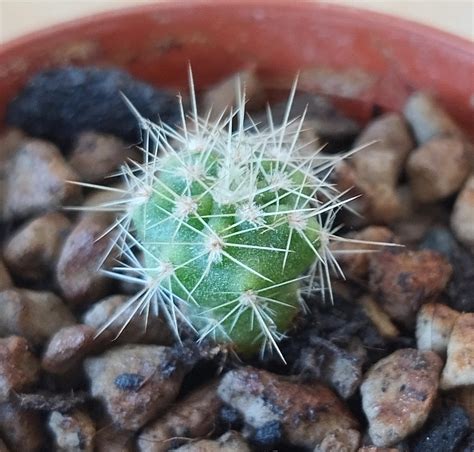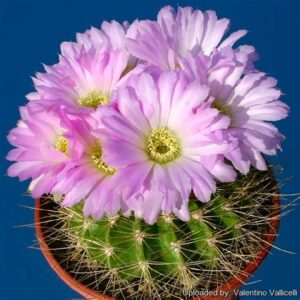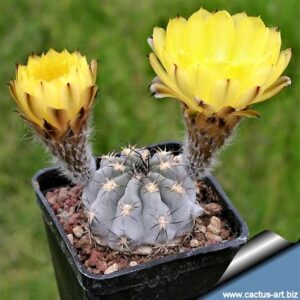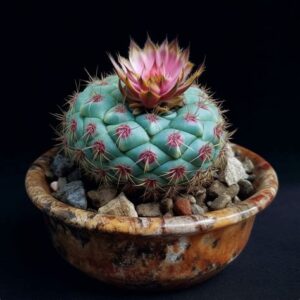Acanthocalycium violaceum is a captivating cactus species that often garners the attention of both novice plant enthusiasts and experienced collectors alike. Known for its vibrant colors and unique structure, the seedling stage of this cactus presents both an exciting and challenging opportunity for horticulturists. But how can one nurture these delicate seedlings effectively? In this discussion, we will delve into the multifaceted world of Acanthocalycium violaceum seedlings, exploring everything from their environmental needs to the common challenges faced in their cultivation.
In this endeavor, nurturing a seedling can sometimes feel like walking a tightrope. What happens when the balance of moisture, light, and nutrients tips? Understanding how to create optimal conditions is essential for promoting growth while avoiding the pitfalls of over or under-care.
The allure of Acanthocalycium violaceum is palpable, but it raises an important question: Are you ready to tackle the responsibility of cultivating these striking plants from their formative stages?
With that in mind, let us examine the essential elements of nurturing Acanthocalycium violaceum seedlings.
Understanding Their Natural Habitat
To effectively nurture Acanthocalycium violaceum seedlings, it is paramount to first comprehend their natural habitat. Native to Argentina, these cacti thrive in specific environmental conditions that can significantly inform their care. Typically, they are found in arid regions with fluctuating temperatures, where they are exposed to both bright sunlight and minimal moisture.
Acanthocalycium violaceum enjoys full sunlight but is also adapted to occasional cloud cover, which prevents sunburn. When cultivating seedlings, replicating these environmental conditions as closely as possible is crucial. An ideal environment consists of well-draining soil, moderate humidity, and ample sunlight, combined with a carefully controlled watering regime.
Choosing the Right Soil Mixture
When dealing with seedlings, the soil mixture plays a pivotal role in their overall health. For Acanthocalycium violaceum, a well-draining soil is non-negotiable. A standard commercial cactus mix may suffice, but it often benefits from additional amendments to enhance drainage and aeration.
A blend of coarse sand, perlite, and pumice can create an optimal environment that supports root development without retaining excess moisture—an essential factor to prevent rot. Additionally, adding organic matter such as coconut coir can improve moisture retention without compromising drainage. The ideal pH for the soil mixture should fall within the slightly acidic to neutral range (around 6.0 to 7.0), promoting healthy growth.
Light Requirements for Thriving Growth
Light exposure is another critical facet in nurturing Acanthocalycium violaceum seedlings. As these cacti flourish under bright sunlight, ensuring adequate light is essential for proper development. However, direct exposure to harsh afternoon sun can scorch fragile seedlings, necessitating a balanced approach.
A south-facing window is typically the best choice, as it provides the brightness that these cacti crave. However, it is wise to filter the sunlight during peak hours using sheer curtains or by placing the seedlings a few feet back from the glass. As seedlings mature, gradually acclimating them to full sun can help them adapt to increased light intensity.
Watering Practices: Finding the Sweet Spot
Watering practices often present the most significant challenge for Acanthocalycium violaceum seedlings. With their origins in a naturally arid environment, overwatering remains a common mistake among new cultivators. It can lead to disastrous consequences, including root rot and eventual death.
The general rule of thumb when watering is to allow the top inch of soil to dry out completely before rehydrating. During the growing season—typically from spring to early autumn—watering every two to three weeks may suffice, depending on the humidity and temperature conditions. Conversely, in the dormant winter months, significantly reducing watering frequency is essential, as the seedlings require less hydration. Always ensure that excess water drains away, as sitting water can be detrimental.
Nutrition: What, When, and How Much?
While Acanthocalycium violaceum seedlings derive some nutrients from the soil, they will benefit from periodic feeding, especially during the growing season. Opt for a diluted, balanced fertilizer specifically formulated for cacti. A half-strength liquid feed every four to six weeks can effectively bolster growth without overwhelming the delicate seedlings.
Special care should be taken to avoid high-nitrogen fertilizers, which can result in excessive soft growth, making them more susceptible to pests and diseases. Allowing seedlings to develop their natural resilience is preferable.
Common Challenges and How to Overcome Them
Even experienced horticulturists face challenges when it comes to nurturing Acanthocalycium violaceum seedlings. Recognizing these common issues can help in proactively preventing them.
One of the most concerning problems is fungal infections, typically resulting from overwatering or insufficient airflow. Ensuring proper drainage and using sterilized soil can mitigate this risk significantly. Additionally, providing ample air circulation will promote evaporation and keep moisture levels balanced, lessening the likelihood of fungal growth.
Pests are another concern for seedlings, with mealybugs, spider mites, and aphids being frequent offenders. Regular checks for early signs of infestation, combined with the use of insecticidal soap or neem oil, can assist in managing these unwanted visitors.
Temperature Fluctuations and Their Impact
Acanthocalycium violaceum seedlings are sensitive to temperature extremes. Ideally, they should be maintained in temperatures ranging from 70 to 85 degrees Fahrenheit during the day and slightly cooler at night. Sudden temperature drops can affect growth and lead to stress, possibly hindering the plant’s ability to thrive.
Creating a stable microclimate can be achieved using heating mats during cool months or relocating seedlings to a controlled environment, such as a greenhouse.
Wrapping Up: The Joy of Nurturing Seedlings
Nurturing Acanthocalycium violaceum seedlings can indeed prove to be an engaging challenge, filled with ample learning opportunities. As you cultivate your seedlings, remember to strike a balance among all the environmental factors, such as light, soil, water, and nutrition, to help them flourish. Observing the growth and development of these unique cacti instills a sense of accomplishment and joy in the nurturing process.
With mindful care and consistent attention, your Acanthocalycium violaceum seedlings will grow into resilient specimens capable of adding splendor to your collection while also standing as testament to your dedication and skill as a cultivator.





Leave a Comment